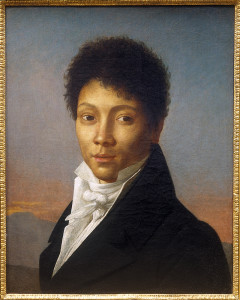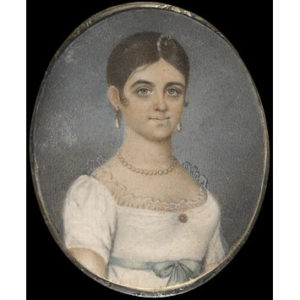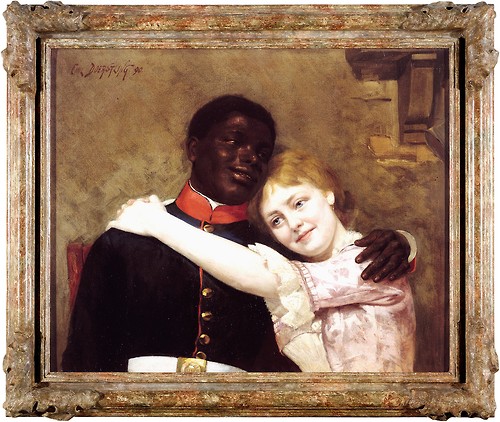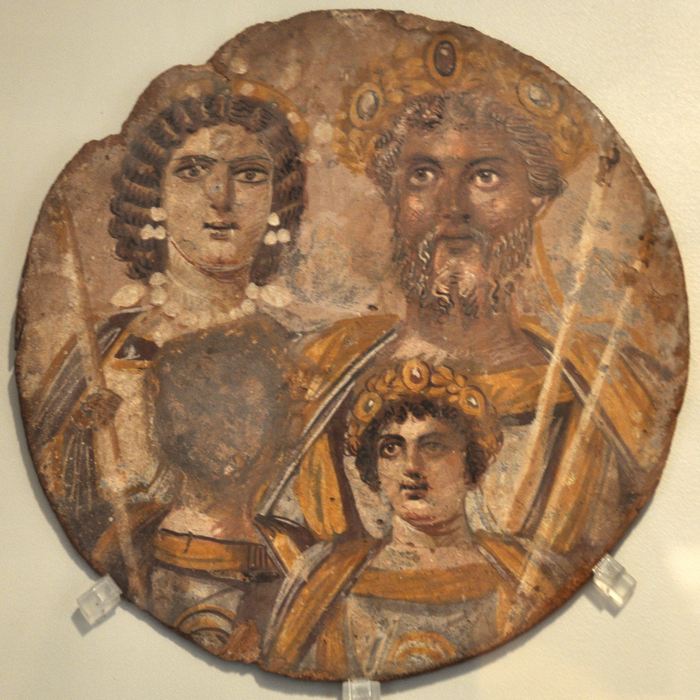Back in 2009, Vylar Kaftan wrote a blog post about diversity statistics in her own fiction. Basically, she did a survey of her fiction, tracking gender, race, sexual orientation, age, class, and ability/disability. I thought this was a darn fine idea, so I did the same, using her template. I actually had a pretty decent balance in my short fiction but then I added in my novels.
All white, all the time.
My first instinct was the defensive one: “Well, it’s the Regency and they’re in a small town. It would be pretty homogeneous.”
 First of all, no. There would have been a range of classes and abilities/disabilities. Just because the author that I was modeling my world on didn’t deal with those, doesn’t mean I had to ignore them as well.
First of all, no. There would have been a range of classes and abilities/disabilities. Just because the author that I was modeling my world on didn’t deal with those, doesn’t mean I had to ignore them as well.
Second. People of color were throughout the UK and Europe and had been basically since people started to travel, which means always. Because of the slave trade, the black population in England was quite large. The Gentlemen’s Magazine in 1764 reported on the number of black people saying, “the number in the metropolis only is supposed to be near 20,000.” This is at a time when London had a population of 750,000 people. That’s a significant percentage of the population.
When you start looking at the birth, death, and marriage records you see people of color all through England, Scotland, and Ireland. Granted, most of these people were living at the poverty line or were working as servants, but not all. There were tradespeople, artists, and “people of quality” represented.
Now I will grant that it is possible for someone living up in the mountains in a small town nowhere near a trade road, to go through life without seeing a person of color but — that someone isn’t likely to be the main character in a novel.
Finally, and this is the important one, o’ writers. I chose where the story was set. I chose the conditions that “forced” me to have all white people all the time. I chose my cast. This is part of why I send Jane and Vincent to London in book three, Without a Summer. I knew that there was a wide range of people of color living in England at the time. Since most had settled in and around London and other port towns, this gave me the greatest range of choices.
 For historical accuracy, I didn’t need to do that. I could have widened the diversity of my cast at any point simply by the choices that I made as a writer. The options were there.
For historical accuracy, I didn’t need to do that. I could have widened the diversity of my cast at any point simply by the choices that I made as a writer. The options were there.
The first person who says, “Yeah, but it’s unlikely that a black person would be able to–” will get a huge eyeroll in response. How many books have you read about a white farmboy who goes on to rule the world? It’s as likely as that.
So don’t blame the lack of diversity on historical accuracy. It’s the author’s choice.
For further reading:
- People of Color in European Art History
- Germany And The Black Diaspora: Points of Contact, 1250-1914
- England, Slaves and Freedom 1776-1838
- Black Africans in Renaissance Europe
- Watch Belle
- “Excluding and Including “Natives of India”: Early-Nineteenth-Century British-Indian Race Relations in Britain”

Note: Because the period I write in is the Regency I focused on that, but this holds true for pretty much any period in history. Take a look at ancient Rome.


Excellent post, Mary. Especially in fantastic genres, it’s interesting what tropes people will swallow without chewing at all (destined farm-boy?) and which ones cause some people to gag.
But, along those lines, I’m fascinated by how the ideas of race and diversity aren’t set in stone; so we have the Irish being considered not-so-white and the many gradations of blackness in America. (Which reminds me of this short piece by Radiolab that I want to share–sharing it is the main reason I’m commenting. It’s all about a small town’s racial attitudes and the flexibility and inflexibility of race: http://www.radiolab.org/story/304341-allys-choice/ .)
That was very interesting. I lived in England for the first 31 years of my life, mainly on the outskirts of London, but with occasional stays at my grandmother’s in Leicestershire. I did not see one black person till I was seven years old and, surprisingly, that was not in London, but in the street near grandma’s where the man was quite a sensation – he was a first for almost everybody in the town.
I believe most black people were employed by the very rich as “showpiece” servants, but I don’t doubt that some made their way to greater independence as enterprising people always will. I had no idea, however, that there were so many in London and, presumably, in a few of the other larger cities too.
I always think about Alexander Pushkin and his great-grandfather when people start with the “a black man wouldn’t have-” argument. Abram Petrovich Gannibal was captured and enslaved and ended up being a godson of Peter the Great and a Russian noble. So… take that white farmboys!
The Roman emperor Septimius Severus was Punic, from Leptis Magna in Libya.
Yep, when I first learned that years ago, mind was blown. An African Emperor? Really? It was an eye-opener.
That’s stretching it to call him African. The Punic people, usually called Carthaginians or Phoenicians or Kena’ai originally came from Canaan or Palestine. They spoke a Semitic language akin to
Hebrew, so they were only African in the sense that Africa is where they lived.
Very interesting, and so very like you to acknowledge and point this out about your own writing and take steps to change it. I’ve always wondered about the term “person of color,” though. It sounds so old-fashioned that my mind almost jumps to the conclusion that it must be derogatory, but maybe it isn’t. Obviously, the term African-American doesn’t work for everyone (e.g. British people of African descent). And, while it’s not entirely inaccurate to refer to me as a “person of no color” (especially in the winter) it would be nicer not to have to make such distinctions.
“Person of color” is an umbrella term used for people who identify as non-white, to acknowledge the common experiences of racism. It is primarily used in the US, although was also the term used in England in the early 1800s for a person of mixed African and English descent.
Great article and another opportunity to provoke some introspection in my own writing.
Wow. This is so interesting! Also tricky to include “diversity” and not have that be the first thing you learn about a character, because as in real life, it’s not the most important thing about them.
Lately I’ve been reading science fiction by Caribbean writers Karen Lord and Nalo Hopkinson, where most of the people in their worlds have darker skin colors.
If I recall correctly the coloured population of Britain almost vanished, two generations after the abolition of slavery: they were widely enough dispersed that their offspring were almost all of mixed race and then mixed again with the larger white population. The led to “black baby” scandals in Victorian times when two white people who had recessive genes for dark skin pigmentation happened to have children together and produced a very dark child. The immediate conclusion was the the lady had been unfaithful with a dark-skinned man.
I think you’ve been misinformed. I have no doubt that there were people passing as white, but there was very definitely an ongoing population of people of colour.
There has been historical and genetic research done on this. Some years ago there was a investigation into the Scots port of Leith where there had been a large black population in the 18th century which had completely disappeared by the early 20th century. Genetic testing showed a large percentage of inhabitants whose families had lived in the port for generations had African markers in their blood, much to their surprise. Intermarriage is not necessarily the same thing as passing as white – or do you mean that a large percentage of the white population of Leith who happen to have an unknown black great-great-great-great-etc-grandparent are really black passing as white?
Much the same thing can be seen in the late 19th and early 20th century in the English port of Liverpool where Chinese seamen took local wives; their descendants have now married further into the local population. It is easy to see that a few more generations will see the Chinese ancestor unknown in some families.
This is actually historically very well known in British history, particularly with regard to the populations of ports.
Lovely post, Mary.
My side note… My father in law is a Scottish writer and naturalist (J Laughton Johnston). He’s frequently come across stories of black people in seemingly unusual places and moments in Britain. Several times in research for his Shetland-based historical works, for example. Or, quite specifically, he discovered that a young Charles Darwin was taught taxidermy by a black man prior to his world travels. I mean… think of the implications of that!
There’s a novel in that, I reckon. Just thinking about it makes me wonder why I haven’t written it yet.
Please do write it!
There’s the French General Alexandre Davy de la Pailleterie; as commander of the Army of the Alps, he was critical to the French Revolution, and remains the highest-ranking man of color in a European army. His personality conflicts with Napoleon got him in trouble later, however, and he spent some years in prison.
He’s better-known as Thomas-Alexandre Dumas, the father of Alexandre Dumas.
And the Chevalier de Saint-George was a noted fencer and considered a brilliant musician and composer in the late 18th century.
Wonderful post, Mary. It’s made me think about how I might bring some people of color into my own writing. Time for me to make it clear those sfronyutic and parsgrand religionists might not have white skin.
I hope your London will include not just Africans, but people from all over the Empire. With colonies and trading relationships throughout the globe, your characters could run into anyone shy of an Aluet without readers feeling you’d forced the person into the story.